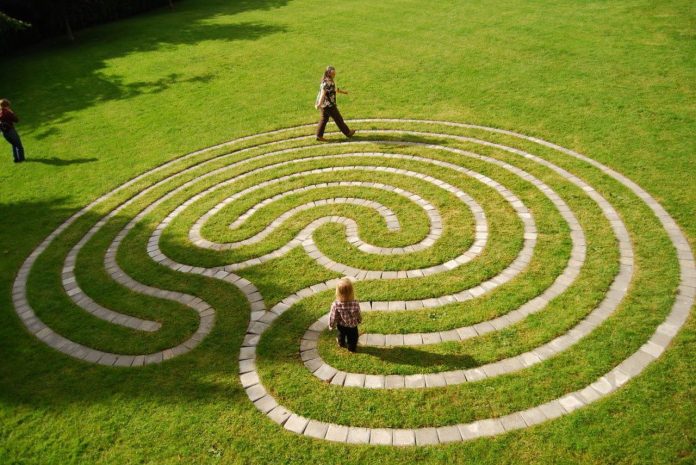Seeking a more intense way to meditate? Try labyrinth walking to decrease stress and experience transformation. Here’s the essential information about it.
Labyrinth walking is a type of meditation which includes indoor or outdoor walking on winding pathways. In contrast to a maze, labyrinths have just one single path leading in or out with no dead ends or intersecting paths. There are varying sizes of labyrinths. Some labyrinths are large. Other labyrinths are small.
There is no scientific evidence to suggest that labyrinth walking can prevent or treat cancer or other serious illness. Relying on labyrinth treatment alone could lead to adverse health consequences. However, labyrinth walking can be helpful if used as a complementary method of decreasing stress and enabling relaxation. Labyrinth walking is considered to be safe when done with conventional medical treatments.
Labyrinth Walking as a Process

The labyrinth walker follows the labyrinth’s path from a starting point to a central area then back to the starting point again. During this journey, the walker could choose to reflect on his or her life, think about life challenges, or clear the mind. People may be seeking a greater sense of spirituality, inner peace, stress relief, or prayer.
Additionally, a person may choose to use the labyrinth experience to seek more insight into individual life challenges. In other words, the journey along the labyrinth could represent one’s own personal journey towards inner wisdom. Or, there may be other goals that emerge during the process. Reaching the completion point is not necessarily the only thing that is important; rather, the intent is to experience personal transformation.
History and Labyrinths

Although their true origins are not fully known, it is believed that labyrinths date back to 2000 B.C. or earlier. In Europe during the middle ages, labyrinths were constructed at several large churches. For example, one labyrinth is in France in the well-known Chartres Cathedral which was built in 1220. This labyrinth and others like it were built in churches so that worshippers who could not undertake the long journey to the Holy Land were able to walk into a labyrinth at a church situated much closer to home. Here, they would make a symbolic pilgrimage that served as a testament and reaffirmation of their religious faith.
There are several religions which incorporate the use of labyrinths. One example of a religion which incorporates the use of labyrinths is Judaism. This religion includes the Tree of Life, also known as the Kabbalah, which resembles an elongated labyrinth. Another example is the Hopi religious tradition where the medicine wheel resembles the labyrinth.
In addition to being a religious symbol, labyrinths can be seen in hospitals, parks, prisons, airports, community centers, or retreat centers. In fact, within the United States, there are approximately 2,000 labyrinths.


















